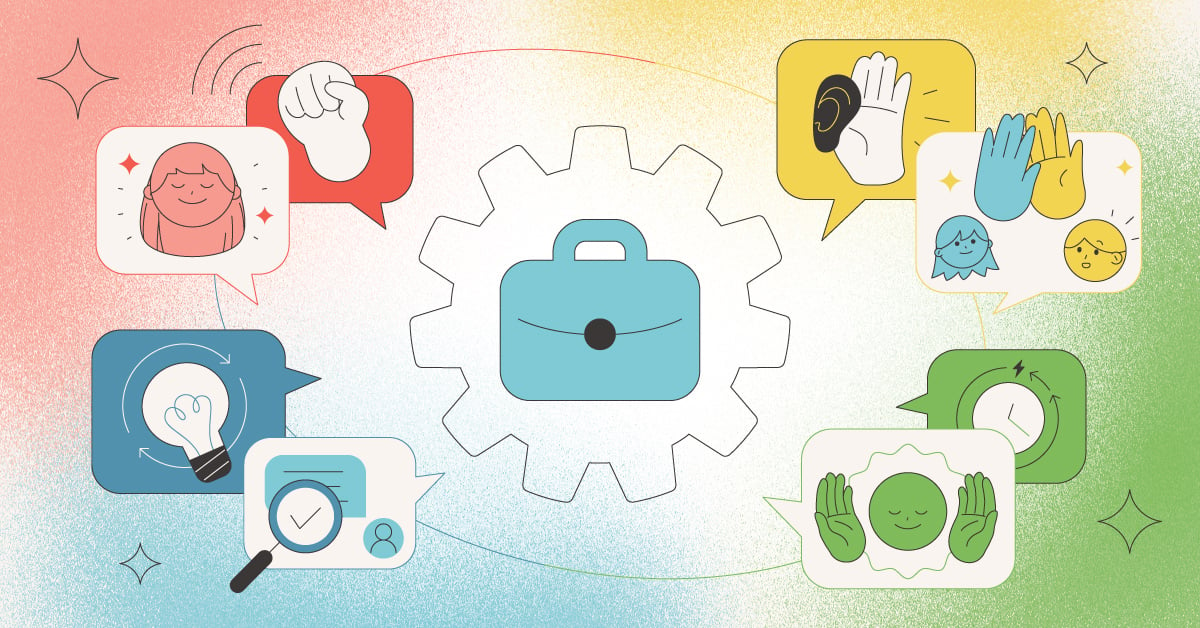
Looking holistically at talent is crucial for recognizing the full range of an individual's abilities. Enhancing adaptability, fostering diversity and psychological safety, and creating more inclusive environments whereby everybody has the opportunity to thrive shows that the uniqueness of each individual is valued. Not to mention, it harnesses their potential for the benefit of the individual and, ultimately, the organization.
TTI Success Insights was the first company in the world to computerize the DISC assessment, and with a 40-year heritage in the assessment world, most people know about the TTI Success Insights DISC assessment. In fact, it’s estimated that 75% of the Fortune 500 companies use DISC. There’s good reason for this though, DISC is a powerful yet simple framework used to describe the ways that people communicate.
Understanding yourself and your preferred communication style is the building block to self-awareness, and self-awareness underpins most development programs around the world. This assessment is a great example of a tool that organizations can implement to look at talent holistically. However, an even better strategy is to consider combining at least 3 powerful sciences together.
The fusion of three of TTI Success Insights’ sciences, let’s say DISC, Driving Forces, and EQ creates the TriMetrix® EQ assessment. This tool is particularly impactful for executive coaching and leadership development. When combining these sciences into practice, it’s helpful to think about their relationship as three areas: Trigger, Response, and Impact.
TRIGGER – Driving Forces
Driving Forces show us our unique ‘WHY’ or personal motivators and values. A Driving Force is a cluster of beliefs with similar underlying patterns or ideas that we believe to be fundamentally important and unquestionably true. Our primary Driving Forces determine what gives us joy, happiness, energy, and purpose. Similarly, when our primary Driving Forces are ignored or contradicted, this can cause great dissatisfaction and frustration. You could think of your Driving Forces as your ‘trigger.’
During communication with a team member, if you have a conflict that contradicts your driving forces or interferes with a personal value, you are extremely likely to find that interaction difficult and frustrating. It’s going to be more frustrating than behavioral friction, for example, because this situation is impacting something deep-rooted within you, part of your values system, and therefore very important to you as an individual.
So, if you’ve ever wondered why certain topics of conversation or a specific situation seemed to challenge (trigger) you more than others, Driving Forces is more than likely the answer.
This, of course, doesn’t just relate to conflict between people. One of the most useful insights you can gain from understanding a person’s Driving Forces as a leader is whether a person’s primary Driving Forces align with a job and the organization’s culture. If there is a mismatch between an individual’s Driving Forces and the organization’s culture, then this is going to cause high levels of disengagement and, therefore be a TRIGGER for the individual. On the flip side, finding harmony between the organization’s culture and the individual’s Driving Forces leads to engagement, energy, and a joyful experience.
RESPONSE – Behaviours/DISC
The response to triggering (positive and negative) situations, in general, depends on
behavioral styles. The DISC profile tells us:
- How we respond to problems and challenges (D)
- How we respond to people and contact (I)
- How we respond to pace & consistency (S)
- How we respond to procedures & constraints (C).
In responses, individuals can be reflective or direct, reserved or outgoing, dynamic or steady, or pioneering or precise. You can observe a DISC profile to gain awareness of natural and adapted behaviors.
IMPACT – Emotional Quotient
How much a triggering situation impacts an individual is based on Emotional Quotient, a measurement of Emotional Intelligence. People with high levels of emotional intelligence are:
- Aware of their emotional states and the impact they can have on other people
- Aware of others’ emotional states and the impact they have
- Able to regulate and control their emotional responses and take action to manage the impact of their own and others’ emotional states.
If EQ is well developed, the triggering situations, communications, and environments are less likely to have an impact. Conversely, if a person’s EQ is not well developed, the triggers are likely to have much more of a personal impact on them and the people around them. Research suggests that people who have developed and applied the principles of emotional intelligence tend to enjoy greater mental and physical health, increased job performance, and more productive relationships.
Having an understanding of all three layers becomes the ultimate tool to help people understand
others in 3D, improving leadership capabilities, productivity, engagement, and overall success.
If you’re curious how leaders in this space use the power of multi-science with TTI Success Insights, click below to access our global panel as they discuss what goes into making an international talent development strategy.
Image provided by Sarah Turner




